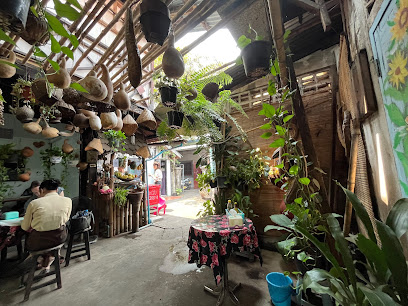
Bolikhamxay Province: The Hidden Gem of Laos
Explore Bolikhamxay Province: A Nature Lover's Paradise with Stunning Waterfalls, Rich Biodiversity, and a Glimpse into Traditional Lao Culture.
Bolikhamxay Province, nestled in the heart of Laos, is a treasure trove for nature lovers and adventure seekers. This less-traveled destination is home to stunning landscapes, lush forests, and majestic waterfalls. The province offers a unique blend of natural beauty and cultural heritage, making it a must-visit for those looking to escape the hustle and bustle of city life. One of the highlights of Bolikhamxay is the Phou Khao Khouay National Park. This park is a paradise for hikers and wildlife enthusiasts, with its diverse flora and fauna. You can explore its dense forests, witness the beauty of cascading waterfalls, and catch glimpses of exotic animals like elephants and gibbons. The park also offers excellent opportunities for bird watching, with numerous species native to the region. Another must-see attraction in Bolikhamxay is the Tad Leuk Waterfall. This stunning natural wonder is perfect for a refreshing swim or a picnic by the water. The surrounding area is rich in biodiversity, making it an ideal spot for nature walks and photography. For those interested in cultural experiences, visiting the local villages offers a glimpse into the traditional way of life of the Lao people. Bolikhamxay is also known for its warm and welcoming locals. The province’s rich cultural heritage is evident in its festivals, traditional crafts, and local cuisine. Don't miss the chance to try some authentic Lao dishes, which are often made with fresh, locally sourced ingredients. Whether you are an adventurer, a nature lover, or a culture enthusiast, Bolikhamxay Province promises an enriching and unforgettable experience.
Local tips in Bolikhamxay Province
- Visit during the dry season (November to April) for the best weather and easier access to natural attractions.
- Hire a local guide for trekking in Phou Khao Khouay National Park to enhance your experience and ensure safety.
- Pack insect repellent and comfortable hiking shoes for exploring the forests and waterfalls.
- Try local dishes like Laap and Tam Mak Hoong at local eateries for an authentic culinary experience.
- Respect local customs and traditions, especially when visiting villages and interacting with residents.
Bolikhamxay Province: The Hidden Gem of Laos
Bolikhamxay Province, nestled in the heart of Laos, is a treasure trove for nature lovers and adventure seekers. This less-traveled destination is home to stunning landscapes, lush forests, and majestic waterfalls. The province offers a unique blend of natural beauty and cultural heritage, making it a must-visit for those looking to escape the hustle and bustle of city life. One of the highlights of Bolikhamxay is the Phou Khao Khouay National Park. This park is a paradise for hikers and wildlife enthusiasts, with its diverse flora and fauna. You can explore its dense forests, witness the beauty of cascading waterfalls, and catch glimpses of exotic animals like elephants and gibbons. The park also offers excellent opportunities for bird watching, with numerous species native to the region. Another must-see attraction in Bolikhamxay is the Tad Leuk Waterfall. This stunning natural wonder is perfect for a refreshing swim or a picnic by the water. The surrounding area is rich in biodiversity, making it an ideal spot for nature walks and photography. For those interested in cultural experiences, visiting the local villages offers a glimpse into the traditional way of life of the Lao people. Bolikhamxay is also known for its warm and welcoming locals. The province’s rich cultural heritage is evident in its festivals, traditional crafts, and local cuisine. Don't miss the chance to try some authentic Lao dishes, which are often made with fresh, locally sourced ingredients. Whether you are an adventurer, a nature lover, or a culture enthusiast, Bolikhamxay Province promises an enriching and unforgettable experience.
When is the best time to go to Bolikhamxay Province?
Iconic landmarks you can’t miss
Phou Khao Khouay National Bio-Diversity Conservation Area
Explore the breathtaking landscapes, diverse wildlife, and serene beauty of Phou Khao Khouay National Bio-Diversity Conservation Area near Vientiane.
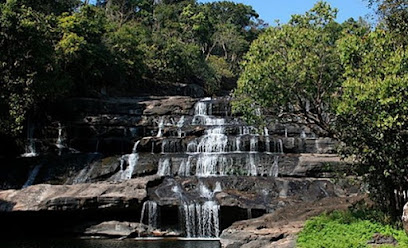
The Rock Viewpoint
Discover stunning views and serene nature at The Rock Viewpoint, a must-visit tourist attraction in the heart of Laos.
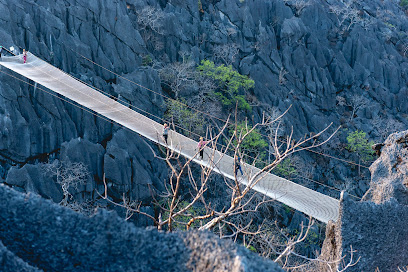
Limestone Forest Viewpoint
Discover unparalleled beauty at Limestone Forest Viewpoint, where stunning limestone formations meet lush greenery in Laos' breathtaking landscapes.
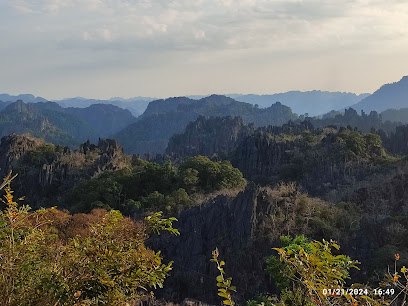
Tad Xai Waterfall
Discover the breathtaking beauty of Tad Xai Waterfall in Hat Khay, Laos – a tranquil haven for nature lovers and adventure seekers alike.
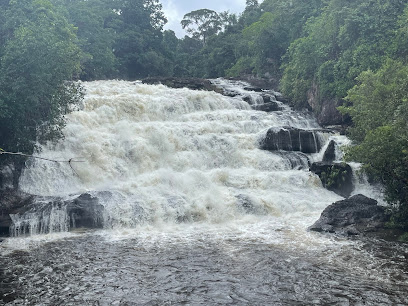
Bolikhamxay Tourism
Explore Bolikhamxay, a hidden gem in Laos, where breathtaking landscapes meet rich cultural experiences for unforgettable adventures.
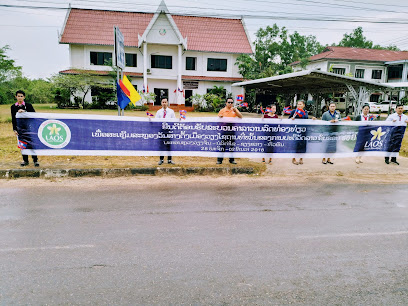
Unmissable attractions to see
Wat Sisaket
Discover the beauty and tranquility of Wat Sisaket, Vientiane's oldest temple, adorned with thousands of Buddha statues and rich in cultural heritage.
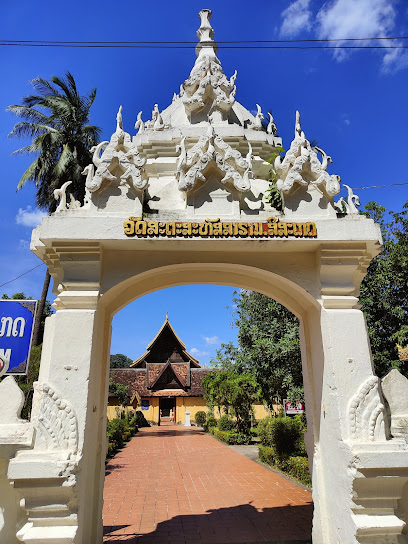
Ho Phrakeo Museum
Explore the rich cultural heritage of Laos at Ho Phrakeo Museum, showcasing exquisite Buddha miniatures and spiritual artifacts in a serene setting.
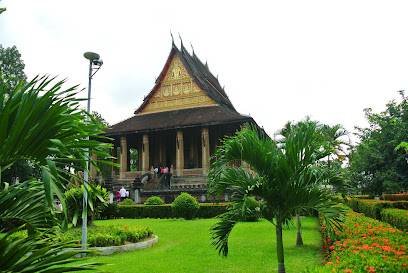
Tham Chang
Discover the wonders of Tham Chang, a stunning cave in Vang Vieng, where adventure meets natural beauty in Laos.
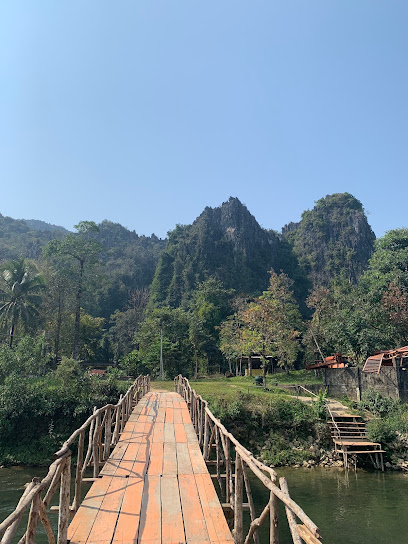
Lao Textile Museum
Discover the artistry and cultural significance of Lao textiles at the Lao Textile Museum, a hidden gem in Vientiane's vibrant heritage scene.

Kaeng Nyui Waterfall
Experience the natural beauty and tranquility of Kaeng Nyui Waterfall in Vang Vieng, a hidden gem for nature lovers and adventure seekers.
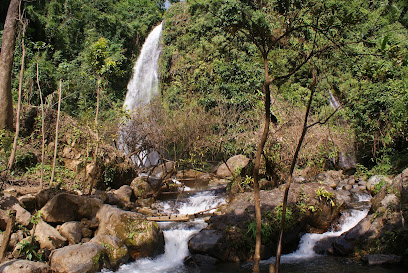
King Anouvong Statue
Experience the rich history of Laos at the King Anouvong Statue, a majestic symbol of courage and cultural pride along the Mekong River.
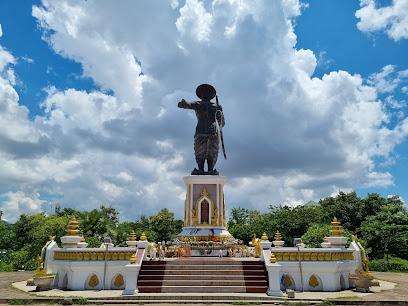
Limestone Forest Viewpoint
Discover the stunning beauty of Limestone Forest Viewpoint, a breathtaking natural gem perfect for adventure and photography enthusiasts.
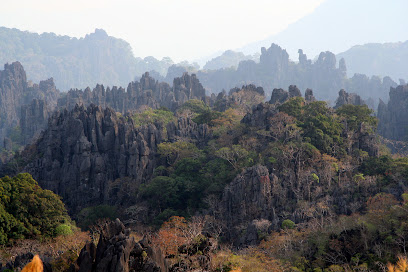
ທາງເຂົ້າບ້ານກະຕຶບບ້ານນາ
Explore ອົງກະຕຸບຸນຕະກອນ - A Stunning Tourist Attraction in Laos, Rich in Culture and Natural Beauty.
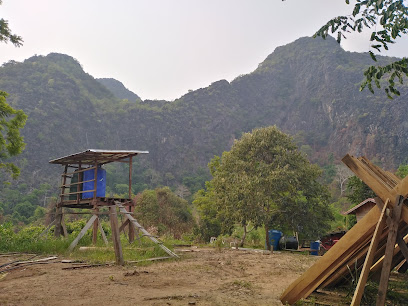
รีสอร์ท สวนไม้ ป:ดับ
Explore the breathtaking landscapes and vibrant ecosystems of this serene state park in Laos, a perfect escape for nature lovers and adventurers.

Nam Sunam Waterfall
Explore the tranquility of Nam Sunam Waterfall, a hidden hiking paradise in Sop San, where nature's beauty awaits your discovery.
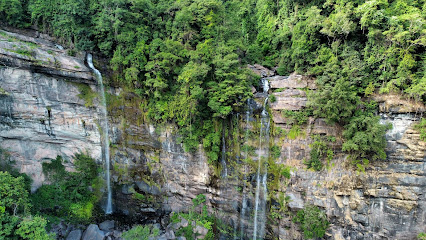
ຕາດແກ້ວ Tad Keo Waterfall
Discover the serene beauty of Tad Keo Waterfall in Nhotkep, Laos—a hidden gem perfect for nature lovers and adventure seekers alike.
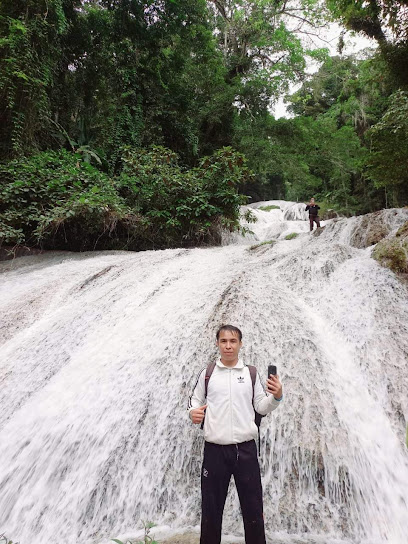
ສວນພຶກສາພູວະນັນ
Explore the serene landscapes and rich culture of Sop Sot, a hidden gem in Laos offering a perfect escape into nature's beauty.

ຄູກັນນ້ຳ
Explore the serene landscapes and vibrant culture at ຄູກັນນ້ຳ Park in Viengthong, Laos - a perfect getaway for nature lovers.
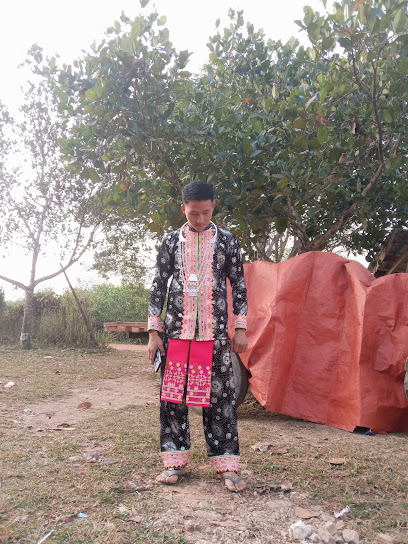
ສວນຢາງຂ້ອຍເອງ
Discover the serene beauty of Na Xuong's hidden garden, a tranquil oasis for nature lovers and a perfect retreat from urban life.

ອ່າງໜອງມິນ
Discover the tranquil charm and cultural richness of Ban Thôngkha, Laos—a hidden gem for nature lovers and cultural enthusiasts alike.
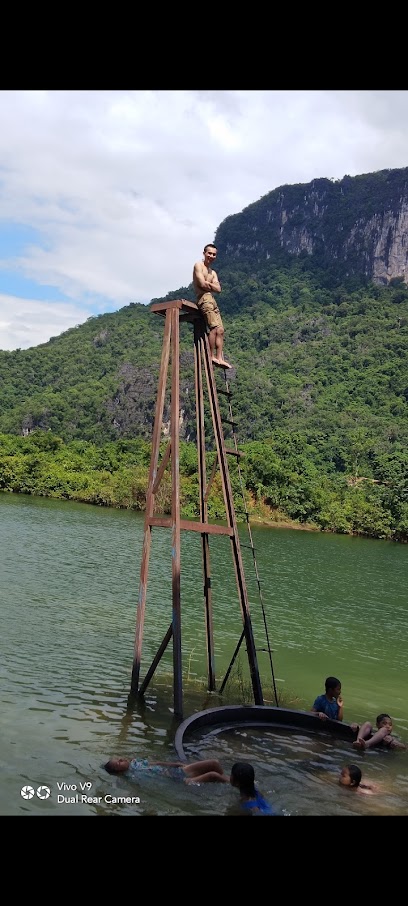
Markets, malls and hidden boutiques
Parkson Laos
Explore Parkson Laos in Vientiane for a modern shopping experience with diverse stores, dining, and entertainment options.
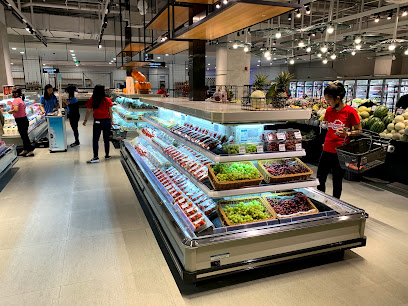
HERWORKS Vientiane Flagship Store
Explore HERWORKS Vientiane Flagship Store for unique souvenirs, handcrafted bags, and local clothing that reflect Laotian culture and artistry.
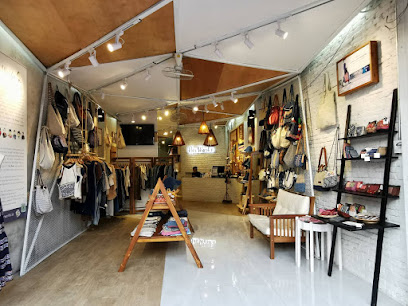
T'Shop Lai Gallery
Explore T'Shop Lai Gallery for unique home goods and authentic Laotian gifts in the heart of Vientiane.
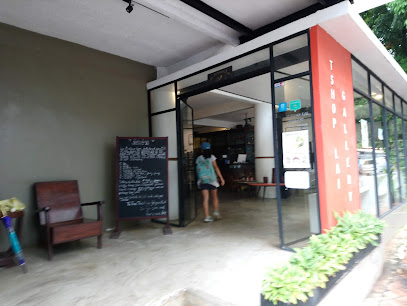
FunBox ບລັອກໆ LAO Vientiane consignment shop Souvenir
Explore FunBox in Vientiane for a unique shopping experience filled with authentic Lao souvenirs and local artistry.
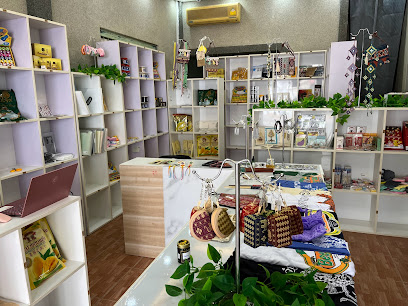
B.Mexay
Explore the vibrant B.Mexay produce market in Pha Deng, a must-visit for fresh local flavors and authentic cultural experiences.

BB Mart minimart Shopping
Discover the essence of local shopping at BB Mart Minimart in Khamsavath Market, Laos, where convenience meets cultural charm.

Kheuamai Handicraft
Discover the rich heritage of Laos at Kheuamai Handicraft, where handcrafted clothing and accessories reflect local artistry and culture.
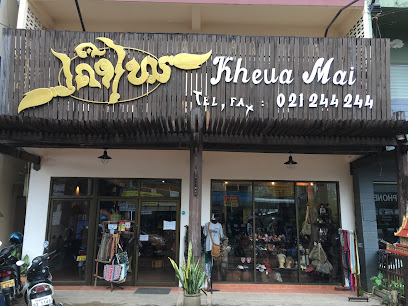
Foua Gift Shop
Explore the charm of Laos with unique handcrafted home goods at Foua Gift Shop in Ban Dindèng.
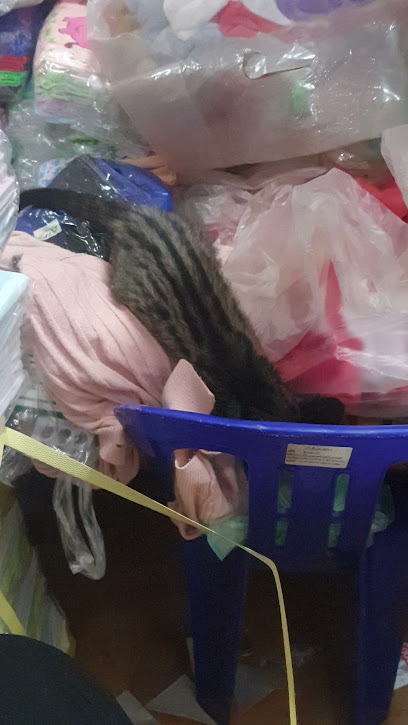
Lovely Shop
Explore Lovely Shop in Vang Vieng for a unique selection of bags, beauty products, and clothing, reflecting the charm of local craftsmanship.
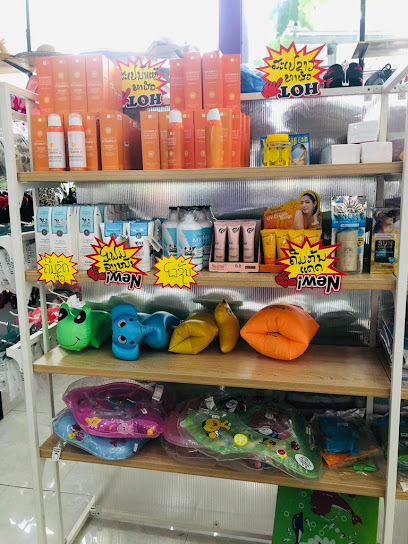
Chong Sher Tho Store
Discover local flavors and necessities at Chong Sher Tho Store, your essential convenience stop in the heart of Taxenbang Nieng.

ร้านขายลดจัก
Discover the charm of Laos at ร้านขายลดจัก, your go-to destination for unique home goods and local craftsmanship.

Gift Shop OK
Explore the charm of Dongdok village with unique gifts and local crafts at Gift Shop OK, a treasure trove for every traveler.
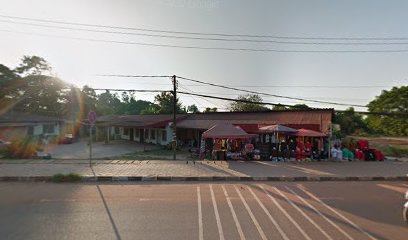
Huphiw store
Explore Huphiw Store, a vibrant produce market in Ban Dongnasok, where fresh flavors and local culture come together for an unforgettable culinary experience.

Mixay Boutic
Explore Mixay Boutique in Vientiane for unique artisanal home goods that capture the essence of Laos, perfect for souvenirs and gifts.
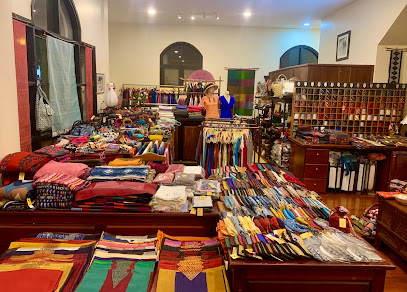
ຮ້ານນາງພັດ
Explore the unique offerings of ຮ້ານນາງພັດ in ບ້ານນ້ຳໂລ້, where local crafts and culture come together to create unforgettable souvenirs.

Essential bars & hidden hideouts
Gary's Irish Bar - The Rising Sun
Discover the charm of Irish culture at Gary's Irish Bar - The Rising Sun in Vang Vieng, where great food and good times await.
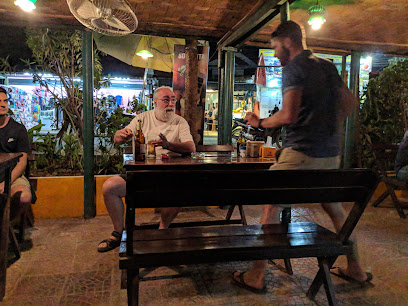
Tully's Irish Pub
Discover the heart of Vientiane at Tully's Irish Pub, where Irish culture meets vibrant local life beside Thatluang Lake.
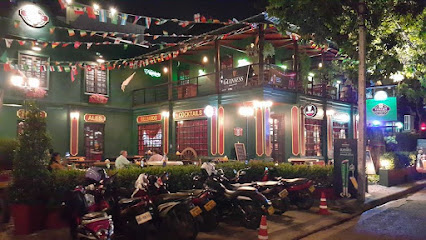
Chokdee Café Belgian Beer Bar
Discover the essence of Belgian beer culture at Chokdee Café, Vientiane's beloved beer garden and restaurant, offering a unique culinary experience.

Go Dunk
Discover the essence of Vientiane's nightlife at Go Dunk, a lively bar offering thrilling live music and creative cocktails in a vibrant atmosphere.
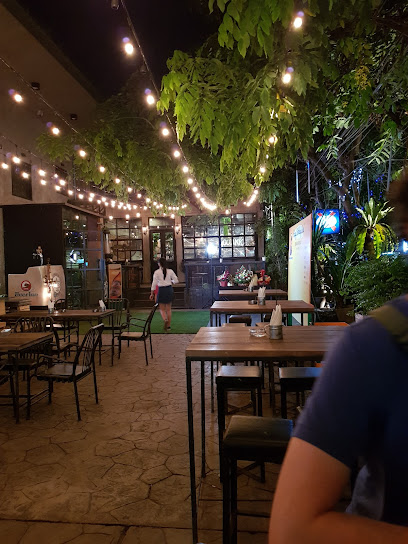
Maolin Tavern
Discover Luang Prabang's vibrant nightlife at Maolin Tavern, a lively bar offering local and international drinks in a welcoming atmosphere.

Outback Laos
Savor the best of Western cuisine in Luang Prabang at Outback Laos, where flavor meets a welcoming atmosphere.
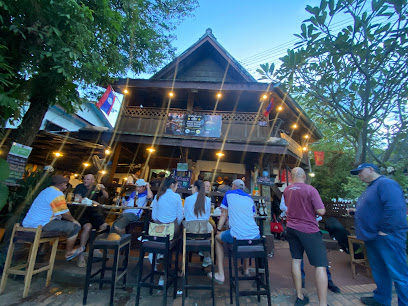
Tipsy Elephant Vientiane Rooftop Lounge
Discover a stunning rooftop retreat in Vientiane, where breathtaking views and delicious cocktails create an unforgettable experience.
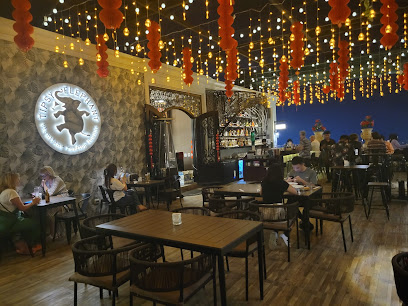
Icon Klub
Experience the vibrant nightlife at Icon Klub, a charming bar in Luang Prabang offering great drinks, games, and live music for an unforgettable evening.
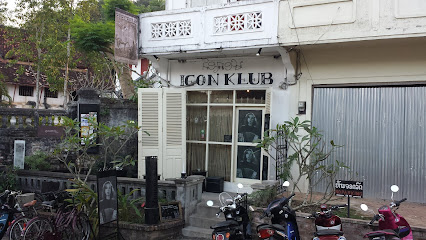
The Office Bar & Tapas
Discover the vibrant nightlife of Vientiane at The Office Bar & Tapas, where exquisite cocktails meet delectable tapas in a lively atmosphere.
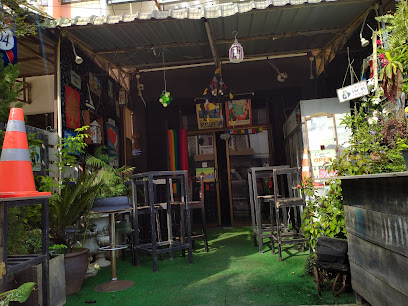
Ohlala bar
Discover the best cocktail experience in Vientiane at Ohlala Bar, where lively ambiance meets exquisite drinks along the Mekong River.
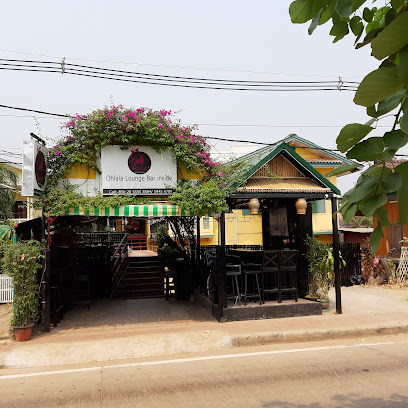
Artisan Bar
Discover Artisan Bar in Luang Prabang, where innovative cocktails meet a vibrant atmosphere for an unforgettable night out.

LPMC Bar & Restaurant
Experience the vibrant essence of Luang Prabang at LPMC Bar & Restaurant, where local flavors meet a lively atmosphere.
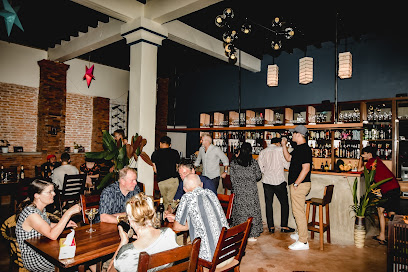
Bearbss
Discover the charm of Bearbss, a cozy bar in Na Hin, offering refreshing drinks and a warm, inviting atmosphere for travelers.
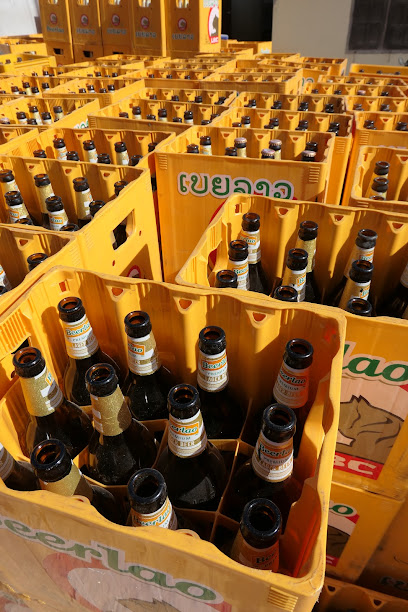
Tonkhoun Ms. Danin Restaurant
Tonkhoun Ms. Danin Restaurant: A karaoke bar blending delicious Lao cuisine with a lively entertainment experience in Phonsy.
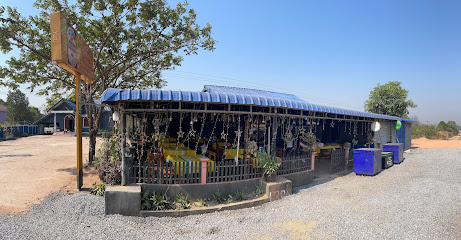
ຮ້ານໄນຣພັບ
Discover the lively nightlife at ຮ້ານໄນຣພັບ in Viengthong, where friendly faces and refreshing drinks await you every evening.
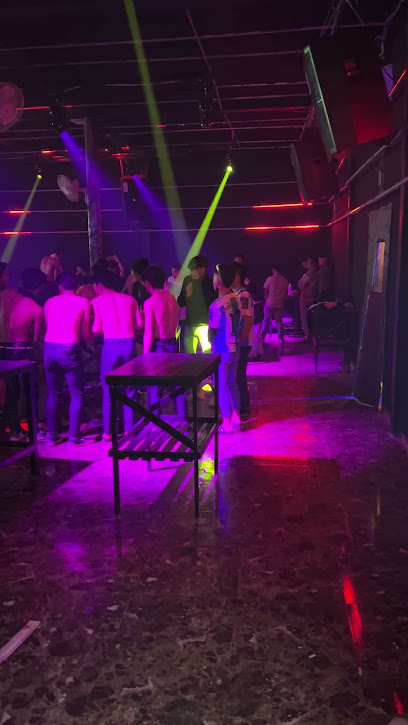
Local Phrases about Bolikhamxay Province
-
- Helloສະບາຍດີ
[sa baai di] - Goodbyeຕ່າງທ່ຽວ
[tang thiao] - Yesຮຸ້
[hu] - Noບໍ່
[bo] - Please/You're welcomeກະລຸນາ
[ka luan na] - Thank youຂອບໃຈ
[khop chai] - Excuse me/Sorryບໍ່ດີ
[bo di] - How are you?ເດີນທາງຂ້າມຫຼາຍ?
[den tang kam lai] - Fine. And you?ດີ. ແລະເຈົ້າອາດ?
[di. lae jao ad] - Do you speak English?ເຈົ້າพูดພາສາອັງກິດບໍ?
[jao pud phasa angkit bo] - I don't understandຂ້າພົວສານ
[kha phu sa nai]
- Helloສະບາຍດີ
-
- I'd like to see the menu, pleaseຂ້າພົວສານ
[kha phu sa nai] - I don't eat meatຂ້າພົວສານ
[kha phu sa nai] - Cheers!ຂ້າພົວສານ
[kha phu sa nai] - I would like to pay, pleaseຂ້າພົວສານ
[kha phu sa nai]
- I'd like to see the menu, pleaseຂ້າພົວສານ
-
- Help!ຂ້າພົວສານ
[kha phu sa nai] - Go away!ຂ້າພົວສານ
[kha phu sa nai] - Call the Police!ຂ້າພົວສານ
[kha phu sa nai] - Call a doctor!ຂ້າພົວສານ
[kha phu sa nai] - I'm lostຂ້າພົວສານ
[kha phu sa nai] - I'm illຂ້າພົວສານ
[kha phu sa nai]
- Help!ຂ້າພົວສານ
-
- I'd like to buy...ຂ້າພົວສານ
[kha phu sa nai] - I'm just lookingຂ້າພົວສານ
[kha phu sa nai] - How much is it?ຂ້າພົວສານ
[kha phu sa nai] - That's too expensiveຂ້າພົວສານ
[kha phu sa nai] - Can you lower the price?ຂ້າພົວສານ
[kha phu sa nai]
- I'd like to buy...ຂ້າພົວສານ
-
- What time is it?ເຈົ້າວ່າເຈົ້າມ້າງແລ້ວ?
[jao wa jao mang laew] - It's one o'clockສິບຫຼາຍ
[sip haai] - Half past (10)ສິບຫຼາຍ
[sip haai] - Morningສິບຫຼາຍ
[sip haai] - Afternoonສິບຫຼາຍ
[sip haai] - Eveningສິບຫຼາຍ
[sip haai] - Yesterdayສິບຫຼາຍ
[sip haai] - Todayສິບຫຼາຍ
[sip haai] - Tomorrowສິບຫຼາຍ
[sip haai] - 1ສິບຫຼາຍ
[sip haai] - 2ສິບຫຼາຍ
[sip haai] - 3ສິບຫຼາຍ
[sip haai] - 4ສິບຫຼາຍ
[sip haai] - 5ສິບຫຼາຍ
[sip haai] - 6ສິບຫຼາຍ
[sip haai] - 7ສິບຫຼາຍ
[sip haai] - 8ສິບຫຼາຍ
[sip haai] - 9ສິບຫຼາຍ
[sip haai] - 10ສິບຫຼາຍ
[sip haai]
- What time is it?ເຈົ້າວ່າເຈົ້າມ້າງແລ້ວ?
-
- Where's a/the...?ຂ້າພົວສານ
[kha phu sa nai] - What's the address?ຂ້າພົວສານ
[kha phu sa nai] - Can you show me (on the map)?ຂ້າພົວສານ
[kha phu sa nai] - When's the next (bus)?ຂ້າພົວສານ
[kha phu sa nai] - A ticket (to ....)ຂ້າພົວສານ
[kha phu sa nai]
- Where's a/the...?ຂ້າພົວສານ
History of Bolikhamxay Province
-
Bolikhamxay Province, nestled in the heart of Laos, has been home to human settlements for thousands of years. Archaeological evidence suggests that the area was inhabited by various ethnic groups, including the Lao Loum, Lao Theung, and Lao Sung, who are known for their distinct languages and cultural practices. These early inhabitants engaged in agriculture, hunting, and gathering, laying the foundation for the province's rich cultural tapestry.
-
During the 14th to 18th centuries, Bolikhamxay was part of the Lan Xang Kingdom, one of the most prosperous and powerful kingdoms in Southeast Asia. The kingdom's influence brought Buddhism and a sophisticated administrative system to the region. Many of the temples and stupas found in Bolikhamxay today, such as Wat Phabath, can trace their origins back to this era, reflecting the kingdom's architectural and religious significance.
-
In the late 19th century, Bolikhamxay, along with the rest of Laos, came under French colonial rule. The French influence is still evident in the province's architecture, particularly in the town of Paksan. The colonial period brought about significant changes, including the introduction of new administrative systems, infrastructure developments, and the spread of Catholicism, which added another layer to the province's cultural landscape.
-
Following World War II, Laos gained independence from France in 1953. However, Bolikhamxay, like much of Laos, was soon embroiled in the Laotian Civil War (1959-1975). The province's strategic location made it a battleground between the Royal Lao Government and the Pathet Lao communist forces. The war left deep scars, but it also shaped the resilient spirit of the local communities.
-
After the establishment of the Lao People's Democratic Republic in 1975, Bolikhamxay embarked on a path of reconstruction and development. Efforts were made to rebuild infrastructure, promote education, and improve healthcare. The province also focused on preserving its cultural heritage, with initiatives to restore historical sites and promote traditional crafts and festivals.
-
In recent decades, Bolikhamxay has embraced ecotourism as a way to both protect its natural environment and promote its rich cultural heritage. The province is home to stunning natural landscapes, including the Phou Khao Khouay National Protected Area, which attracts nature enthusiasts from around the world. Cultural festivals, such as the annual That Sikhottabong Festival, celebrate the province's historical and religious heritage, fostering a sense of pride and continuity among its inhabitants.
Bolikhamxay Province Essentials
-
Bolikhamxay Province is located in central Laos. The nearest major airport is Wattay International Airport in Vientiane, approximately 150 kilometers away. From Vientiane, you can take a bus, minivan, or hire a private taxi to reach Bolikhamxay. The journey by road typically takes around 3 to 4 hours. Alternatively, you can use local flights to Thakhek Airport, which is closer but less frequent.
-
Transportation within Bolikhamxay Province includes local buses, tuk-tuks, and songthaews (shared pickup trucks). Renting a motorbike is a popular option for exploring rural areas and attractions at your own pace. For longer distances, private taxis and minivans are available and can be arranged through local travel agencies or accommodations.
-
The official currency in Laos is the Lao Kip (LAK). Credit cards are accepted in some hotels, restaurants, and larger shops, but it is advisable to carry cash, especially in smaller establishments and rural areas. ATMs are available in larger towns, but it's wise to withdraw sufficient cash in Vientiane before traveling to more remote areas to ensure you have enough funds.
-
Bolikhamxay Province is generally a safe destination for tourists. However, it is advisable to take standard precautions. Avoid walking alone at night in unfamiliar areas and keep an eye on your belongings in crowded places. There are no specific high-crime areas targeting tourists, but it is always best to stay vigilant and aware of your surroundings.
-
In case of an emergency, dial 1191 for medical assistance and 1192 for police. Major hospitals and clinics are available in larger towns like Paksan. It is recommended to have travel insurance that covers medical emergencies. Pharmacies are available in the province where you can purchase over-the-counter medications for minor health issues.
-
Fashion: Do dress modestly, especially when visiting religious sites. Avoid wearing revealing clothing. Religion: Do respect local customs and traditions. Always remove your shoes and cover your shoulders when entering temples. Public Transport: Do be respectful and give up your seat to elderly passengers. Don't eat or drink on public transport. Greetings: Do greet people with a slight bow and a smile. Avoid touching people's heads, as it is considered disrespectful. Eating & Drinking: Do try local delicacies and accept food offerings graciously. Don't refuse hospitality, as it is considered impolite.
-
To experience Bolikhamxay Province like a local, visit the local markets where you can buy fresh produce and traditional Lao goods. Engage with locals, as they are often friendly and willing to share stories about the region's history and culture. Don't miss visiting the Phou Khao Khouay National Protected Area for a unique wildlife experience. For a serene experience, take a boat ride along the Mekong River and visit the various small villages along its banks.
Nearby Cities to Bolikhamxay Province
-
Things To Do in Phonsavan
-
Things To Do in Xieng Khouang
-
Things To Do in Vientiane
-
Things To Do in Savannakhet
-
Things To Do in Udon Thani
-
Things To Do in Vang Vieng
-
Things To Do in Luang Prabang
-
Things To Do in Hanoi
-
Things To Do in Loei
-
Things To Do in Ubon Ratchathani
-
Things To Do in Ha Long
-
Things To Do in Nan
-
Things To Do in Pakse
-
Things To Do in Hue
-
Things To Do in Champasak






